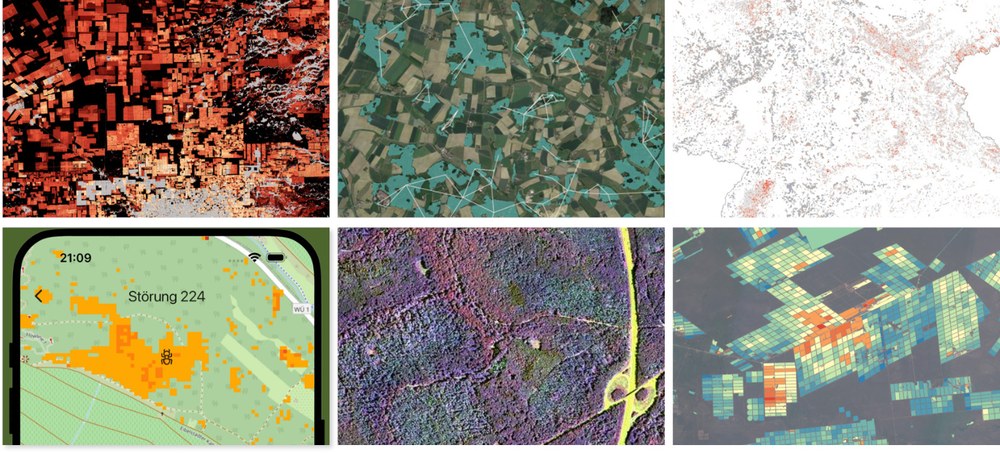EO4CAM
EO4CAM aims at decision-makers who are to be continuously provided with objective and reliable information on climate-related change processes in Bavaria via the project.
With the help of modern remote sensing methodologies, the "Forest Ecosystems" Team at the German Aerospace Center (DLR) records and analyzes forest condition, structure, diversity and transformations. Our goal is to make available information products that support sustainable forest development in the context of global change.
Forests cover almost one third of the global land surface and are the habitat of innumerable animal and plant species. They regulate the water inventory and the microclimate, are recreational areas for people, and provide a renewable raw material, wood. Forests are especially important for their role in global climate because they are potential carbon sinks and an important element of complex material and energy cycles. But because of these numerous ecosystem services they are under great stress of exploitation. Particularly in the global south uncontrolled deforestation leads to serious forest loss. Especially clearance for raw material extraction and the expansion of areas for settlement and agriculture frequently occur illegally.
Forests in Central Europa are, in contrast, affected by disruptions like storms, insect infestation and forest fires – and, especially in the recent past, by the effects of climate change, such as extreme drought. Natural forests are less prone to damage. Through forest conversion and reforestation with a variety of tree species in order to achieve forests that are structurally diverse and adapted to their locations, climate-resilient forest ecosystems should be able to develop in the long term. In addition, species distribution and forest structure are key parameters for estimating wood reserves and calculating carbon sequestration in forests. Forest vitality is also closely connected with climate protection since healthy forests assure high carbon intake and are more resilient to extreme climate events. Another challenge for the management of Central European forests is retaining and restoring biodiversity in parallel with economic utilization. In contrast to agriculture practice, forest development proceeds over long periods of time and thus requires farsightedness in forest conversion and cultivation.

The "Forest Ecosystems" team uses remote sensing data to record large-scale forest structures, vitality, species composition and damage. The availability of many years of satellite data time series make it possible to continuously monitor large forested areas and detect changes in forests due to natural and anthropogenic processes. The team's goal is to devise application-oriented earth observation methodologies in order to provide information products, statistics and services for monitoring forest ecosystems. Such information should assist decision makers in achieving sustainable forest development. Analyses such as mapping forest damage, structural changes, fragmentation and vitality are valuable for qualtifying the influence of climate change and human activity on forest ecosystems. This work provides a data basis that makes possible the configuration of sustainable adaptive and reduction forestry strategies.


The team's research concentrates on Central Europe and South America, but our methods are normally applicable worldwide. The emphasis is on assesing data from the optical Copernicus Sentinel and Landsat missions, augmented by mid-range resolution time series (MODIS, AVHRR) as well as radar, lidar, hyperspectral and aerial image data. Modern approaches to time-series analysis, machine learning and big-data processing make possible the precise and automated analysis of large amounts of data.
For a demand-oriented development of new information products and further improvement of algorithms and forest monitoring methods we attach importance to close interaction with scientists, public administrators and practitioners. The results of our research are essential for making knowledge based decisions in the environment and forest sector that are relevant for planning, research, private enterprise, public administration, policy makers and society. They provide foundations for sustainable forest management strategies and help safeguard ecosystem functions for the long term. Our work actively contributes to promoting more resilient, healthy forests and to preserving their diverse ecosystem services.

